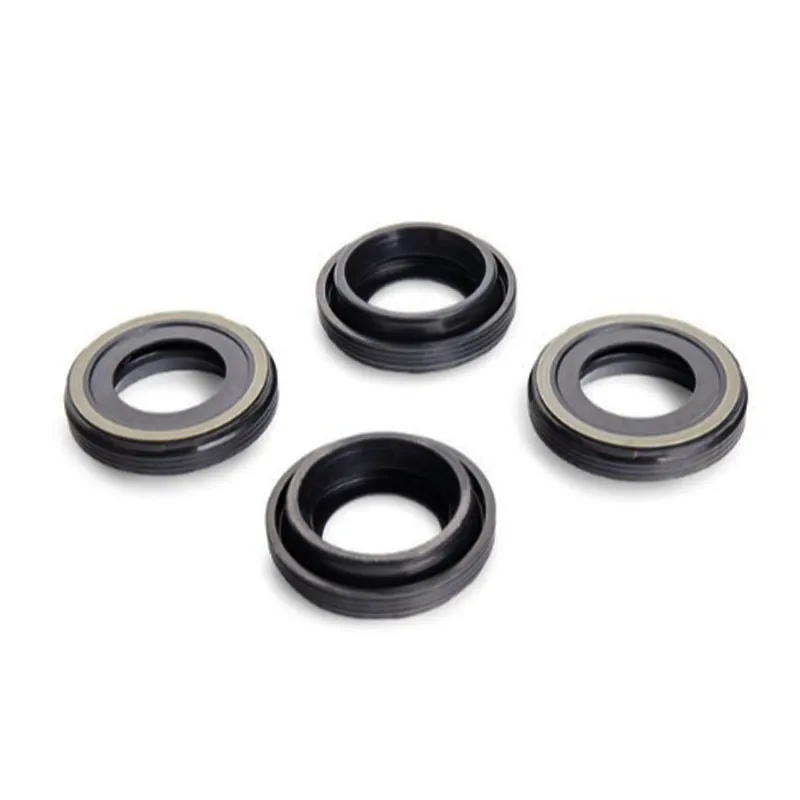Importance of Front and Rear Crankshaft Seals in Engine Performance and Longevity
Front and Rear Crankshaft Seals Importance and Maintenance
The crankshaft seal plays a critical role in the operation of an internal combustion engine. Positioned at the front and rear of the crankshaft, these seals serve as barriers to prevent oil leaks and contamination from the external environment. Failure of these seals can lead to significant engine issues, making it imperative for vehicle owners and mechanics to understand their importance and maintenance.
Function of Front and Rear Crankshaft Seals
The primary function of both front and rear crankshaft seals is to keep the engine oil contained within the engine and prevent it from leaking out. The front crankshaft seal, often referred to as the timing cover seal, is located at the front of the engine, where the crankshaft connects to the timing belt or chain. The rear crankshaft seal is located at the back of the engine, adjacent to the transmission. Together, they form a critical containment system that maximizes engine efficiency and longevity.
The seals are made from durable materials such as rubber or silicone, designed to withstand high temperatures and pressures found in engine environments. They operate under varying conditions, particularly as a vehicle ages and experiences fluctuating temperatures and mechanical movements. Over time, these seals can become brittle, cracked, or worn, leading to oil leaks that not only impact engine performance but can also lead to serious damage if not addressed.
Signs of Failures
Vehicle owners should be vigilant for symptoms indicating possible seal failure. Common signs include
1. Oil Leaks Puddles of oil under the vehicle or oil streaks along the engine are often initial indicators that a crankshaft seal has failed. 2. Oil Pressure Warning Light If the oil pressure warning light illuminates on the dashboard, it may signal an oil leak, potentially connected to a compromised crankshaft seal.
3. Increased Engine Noise Oil leaks can create insufficient lubrication, leading to unusual noises from the engine components due to increased friction.
4. Burning Oil Smell Oil seeping onto hot engine parts can create a burning smell, signaling that it's time to inspect the seals.
front and rear crankshaft seals

Maintenance and Replacement
Regular maintenance can prolong the life of crankshaft seals. Vehicle owners are encouraged to adhere to the manufacturer’s recommended oil change intervals and to use high-quality engine oil. Periodic inspections performed during routine maintenance allow mechanics to check for signs of wear or leaking, which can prevent unexpected failures.
If a seal is found to be leaking, replacing it promptly is vital. Replacing a crankshaft seal involves
1. Removing any components that obstruct access to the seal, such as the timing belt, pulleys, or transmission (in the case of the rear seal).
2. Carefully removing the old seal without damaging the crankshaft or surrounding components.
3. Cleaning the sealing surface to ensure proper adhesion of the new seal.
4. Installing the new seal carefully, ensuring it is seated correctly and evenly to prevent future leaks.
Conclusion
The front and rear crankshaft seals might be small components in an engine, but they have a significant impact on its overall performance. Vigilance for signs of wear, combined with regular maintenance and timely replacement, can save vehicle owners from costly repairs and ensure the engine runs smoothly for years to come. By investing in proper care, drivers can prolong the life of their vehicles and enjoy a more reliable driving experience.
-
The Ultimate Guide to Car Repair Kits: Tools and Essentials Every Driver Should Own
News Aug.01,2025
-
The Complete Guide to Oil Pan Gaskets: Sealing Engine Leaks the Right Way
News Aug.01,2025
-
Preventing Oil Leaks: A Complete Guide to Oil Pan Gaskets and Drain Seals
News Aug.01,2025
-
Everything You Need to Know About Oil Pan Gaskets and Drain Plug Seals
News Aug.01,2025
-
Essential for Car Owners: How to Use a Car Repair Kit to Deal with Minor Breakdown
News Aug.01,2025
-
Comprehensive Guide to Engine Oil Sump Gaskets and Related Seals
News Aug.01,2025
-
The Ultimate Guide to Boat Propeller Bearings and Trailer Wheel Bearings
News Jul.31,2025
Products categories















